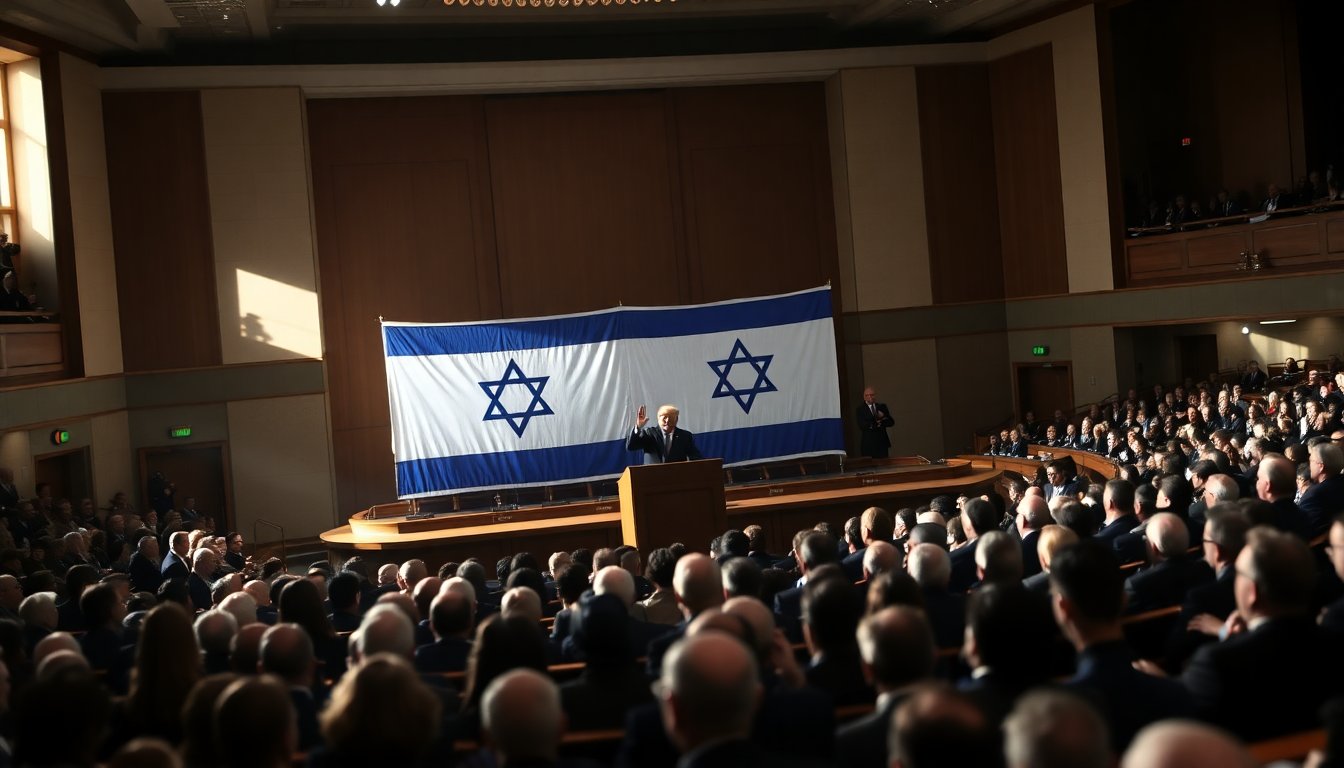Table of Contents
In a moment filled with tension and hope, U.S. President Donald Trump addressed the Knesset, Israel’s parliament, coinciding with the release of hostages by Hamas. This event marks a critical juncture in the ongoing struggle for peace in the region. Israeli Prime Minister Benjamin Netanyahu, speaking in Hebrew, acknowledged Trump’s role, which has drawn both applause and scrutiny from various quarters.
The atmosphere was charged with anticipation as Trump, seated beside Netanyahu, smiled and received a warm welcome from lawmakers. However, this visit was not without complications; media outlets reported conflicting details regarding Netanyahu’s participation in a summit in Egypt, raising questions about the dynamics of the diplomatic engagement.
Humanitarian efforts in Gaza and the implications of the ceasefire
As part of the ceasefire negotiations, humanitarian aid has started flowing into Gaza after a prolonged period of deprivation. The reintroduction of cooking gas, previously unavailable, signifies a small but crucial victory for families who had resorted to open fires for cooking. This shift has sparked optimism among residents, though concerns about the stability of the ceasefire linger.
Humanitarian agencies report progress
Reports from the United Nations Office for the Coordination of Humanitarian Affairs (OCHA) highlighted notable improvements in the situation. For the first time since March, not only cooking gas but also essential supplies like frozen meat, fresh fruits, and necessary medical provisions have been allowed into Gaza. The OCHA noted that the easing of restrictions has enabled them to position emergency supplies effectively, reinforcing the need for continued support as winter approaches.
The geopolitical landscape and future peace talks
As international leaders converge in Sharm el-Sheikh, Egypt, for a pivotal peace summit, the focus remains on solidifying the fragile agreements reached thus far. Both Netanyahu and Palestinian President Mahmoud Abbas are expected to engage in discussions aimed at reinforcing their commitment to a peaceful resolution. Despite Trump’s insistence that the war is over, Netanyahu has remained cautious, emphasizing that the situation remains complex.
The significance of Trump’s visit
Trump’s visit has elicited mixed reactions. Some view it as a necessary step towards peace, while others remain skeptical about the sustainability of the agreements. The presence of U.S. flags and billboards comparing Trump to historical figures like Cyrus the Great reflect a deep-seated hope among some Israelis. However, others express concern that this may be an early celebration before substantive changes take root.
In the backdrop of these developments, the Canadian government has shown its support for a two-state solution, with Prime Minister Mark Carney emphasizing the importance of recognizing a Palestinian state. This commitment underscores the broader international push for a balanced approach to the Israeli-Palestinian conflict, aiming to foster lasting peace.
As the summit unfolds, critical elements of Trump’s proposed peace plan remain unresolved, including the disarmament of Hamas and the timeline for Israeli withdrawal from Gaza. These discussions will be crucial in determining the future of the region. The international community watches closely, hoping that the positive momentum generated by these talks will lead to tangible improvements for the people in both Israel and Palestine.
Trump’s visit to Israel represents both an opportunity and a challenge. With a delicate balance of optimism and skepticism, the road ahead will require careful navigation among all parties involved to achieve a lasting resolution. As leaders gather in Egypt, the dialogue initiated in Israel serves as a hopeful foundation for future peace efforts.


